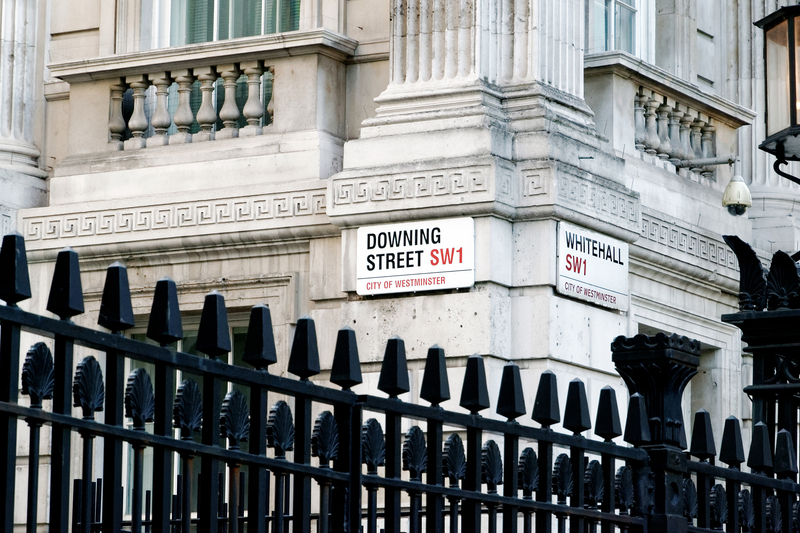The Art of Moving a Piano Safely: Why DIY Isn't Safe
Posted on 20/06/2025
The Art of Moving a Piano Safely: Why DIY Isn't Safe
Pianos are not just beautiful instruments--they are an investment in culture, art, and often hold deep personal meaning. When it's time to move a piano, the complexities are vast, and many underestimate the enormous challenge involved. This comprehensive guide explores the art of moving a piano safely, why DIY approaches are fraught with risk, and why relying on professional services is your best option.
Understanding the Complexity of Piano Moving
Pianos are marvels of engineering and craftsmanship. Whether it's a grand, baby grand, upright, or digital, each type is uniquely designed and often extremely heavy. A single wrong move during transport can lead to costly damage to the instrument or serious injury.
The Anatomy of a Piano: More Than Just Heavy Furniture
At first glance, a piano may seem like an awkwardly-shaped but manageable item. In reality, pianos weigh anywhere from 300 to over 1,200 pounds. Their interior contains delicate mechanisms, including:
- Thousands of moving parts
- High-tension steel wires
- Fragile wooden soundboards
- Pedals and keyboards engineered for precision
This intricate construction means any mishandling may cause irreparable internal and external damage.

Risks Associated with DIY Piano Moving
DIY piano moving might seem cost-effective at first glance. However, without the proper training and equipment, you're endangering your instrument, your property, and most importantly, yourself.
The Most Common DIY Piano Moving Hazards
- Personal Injury: Back injuries, crushed fingers, and muscle strains are common when mishandling heavy objects like pianos. The weight distribution can be unpredictable, and pianos often need to be maneuvered through tight spaces, stairs, or elevators.
- Property Damage: The sheer size and mass of a piano can cause scratched floors, dented walls, and damaged doors. Even a slight miscalculation can have huge repercussions.
- Piano Damage: Internal mechanisms are sensitive to sudden jolts and tilting. DIY movers might lack the knowledge to secure and transport the instrument without causing harm to its structure or sound.
Why Do-It-Yourself Piano Moving Is Not Worth the Risk?
With countless horror stories of dropped pianos and expensive repairs, the short-term savings of DIY approaches rarely outweigh the long-term costs. Insurance often won't cover damages if the move wasn't handled by professionals.
Professional Piano Moving: The Gold Standard
Experienced piano movers use specialized techniques and equipment to ensure safe transport. They understand the nuances of moving every type of piano through a variety of settings, from suburban homes to concert halls.
Essential Professional Equipment and Skills
- Piano Dollies and Skid Boards: For safe and smooth rolling movement and secure placement.
- Padded Moving Blankets: To protect the finish and internal mechanisms from knocks and vibrations.
- Ramps and Lifting Straps: Designed to handle staircases and high thresholds, minimizing risk.
- Disassembly and Reassembly: Pros know which parts to safely remove, wrap, and reattach.
- Team Coordination: Professional movers use strategic communication to maneuver tight spaces securely.
Step-By-Step: How the Pros Move a Piano Safely
1. Pre-Move Assessment
Before moving, professionals assess the piano's type, dimensions, and weight. They also inspect the pathways, measuring doorways and noting potential obstacles such as stairs, tight corners, or elevators.
2. Preparation and Protection
- Padding and Wrapping: Movers carefully wrap the piano to guard against scratching and impacts.
- Securing the Lid and Keys: These are either locked or specially wrapped to prevent unwanted movement.
- Removing Removable Parts: Pedals, music stands, or legs are detached to minimize the risk of damage during transit.
3. Lifting and Maneuvering
Using teamwork, lifting straps, ramps, and sometimes cranes, the piano is gently moved onto the dolly and steered through the building. Each movement is calculated and coordinated, ensuring complete control over the instrument.
4. Transport and Delivery
Pianos are loaded onto climate-controlled trucks to avoid extreme temperature or humidity changes that could harm the wood or mechanics. At the destination, movers reverse the process, reassembling and positioning the piano in its new home.
Real-Life Examples of What Can Go Wrong With DIY Piano Moving
No discussion about the dangers of DIY piano moving would be complete without cautionary tales. Here are a few typical--and costly--scenarios:
- Case 1: A family attempts to slide their upright piano down a porch step with a few friends. The weight shifts, the piano tips, and it crashes onto the lawn, snapping a leg and damaging the soundboard. The repair costs nearly as much as a new instrument.
- Case 2: A group tries to lift a baby grand through a narrow hallway without removing the legs properly. The sideways pressure cracks the leg, and the side panel is scratched beyond repair.
- Case 3: Well-meaning friends drop a piano on a staircase, injuring one mover and damaging the stair treads, leading to both medical and property repair expenses.
These examples show just how quickly a piano move can go wrong--and why it's always safer to hire professional piano movers.
Why Insurance and Liability Matter
Most reputable piano moving companies are fully insured. This means that if something unexpected does occur, your instrument and property are covered. In contrast, damage during a DIY move or a move handled by inexperienced laborers typically isn't insured, leaving you with the full burden of any loss.
Understanding the Value of Your Piano
A piano is often one of the most valuable items in a home after art, jewelry, and electronics. Besides its monetary value, the sentimental value can be immeasurable. Is it worth risking both on a DIY attempt?
Additional Considerations: Climate and Tuning
Pianos are sensitive to changes in temperature and humidity, which can cause warping of wooden components and affect the instrument's sound. Professional movers are trained to limit your piano's exposure to environmental fluctuations and know the best ways to acclimate a piano to a new environment after a move.
Post-Move Tuning
Even with the most careful handling, a move can cause a piano to go out of tune. Professional services often include recommendations for post-move tuning and inspection, ensuring your instrument sounds as beautiful in its new home as it did before.

When to Consider Hiring a Professional Piano Moving Company
If your piano move involves any of the following, it's essential to call in the experts:
- Grand or baby grand pianos
- Moves involving flights of stairs or tight spaces
- Historic or antique instruments
- Long-distance moves (especially interstate or cross-country)
- Pianos of significant sentimental or monetary value
In these circumstances, DIY approaches are extremely risky and rarely, if ever, worth the potential consequences.
How to Choose the Right Professional Piano Movers
- Experience and Reputation: Look for movers with specialized piano moving experience and positive reviews.
- Insurance and Certifications: Ensure the company is properly insured and has credentials for handling valuable instruments.
- Transparent Pricing: Reliable movers will provide a clear, upfront quote based on piano type, move complexity, and location.
- Specialization: Some companies focus solely on instruments or fragile items, providing peace of mind.
Ask about their methods, equipment, and any extra services such as storage or tuning to get the most value from your investment.
SEO Optimized Conclusion: The True Art of Piano Relocation
Moving a piano is far more than simply transporting heavy furniture--it's a delicate process that demands knowledge, specialized equipment, and a practiced touch. The art of moving a piano safely lies in knowing what's at stake: the wellbeing of your cherished instrument, the safety of everyone involved, and the integrity of your home.
If you're facing a move, remember the risks associated with DIY piano moving. The costs of repairs, potential injury, and the loss of an irreplaceable instrument far outweigh any savings. Proficient, insured piano movers are the key to preserving your investment and peace of mind.
Entrust your piano to seasoned professionals who understand the intricacies of its move. That way, you can relax and look forward to the next beautiful melody played in your new space--knowing that every step of the journey was handled with expertise and care.
Ready to move your piano safely?
Contact a reputable piano moving company today for a quote and experience the difference that true professionals bring to the art of piano relocation.



